
Manila Bay: A Resurgent Haven of Marine Life and Breathtaking Sunsets
It is considered to be one of the world’s great harbors, the Manila Bay, and it serves as the Port of Manila, Philippines. Having once
Known as the main post office of Manila and the head office of the Philippine Postal Corporation, the Manila Central Post Office is the main hub of the country’s mail sorting and distribution operations for the whole country.
Known as the main post office of Manila and the head office of the Philippine Postal Corporation, the Manila Central Post Office is the main hub of the country’s mail sorting and distribution operations for the whole country.
Known as the main post office of Manila and the head office of the Philippine Postal Corporation, the Manila Central Post Office is the main hub of the country’s mail sorting and distribution operations for the whole country.


Manila Central Post Office was designed by Juan M. Arellano and Tomas Mapua in the Neoclassical style and was built in the year 1926 along the Pasig River’s shoreline and at the foot of the Jones Bridge to allow convenient transportation of mails across the river by water.
Since the post office was located in the center of the city with converging avenues, it was easily accessible from all sides including Quiapo, Binondo, Malate and Ermita – a strategic plan developed by Daniel Turnham. Although it was severely damaged during World War II, in the Battle of Manila, it was rebuilt in 1946 with many of the original features retained and restored, despite being severely damaged.

There is no better time to take pictures of the structure than when it is at sunset, when the reflections of the building are visible in the water, from the Jones Bridge.








RELATED STORIES

It is considered to be one of the world’s great harbors, the Manila Bay, and it serves as the Port of Manila, Philippines. Having once

The San Agustin Museum is located adjacent to the UNESCO World Heritage Site, San Agustin Church. It is located in Intramuros—the walled city of Manila—and

The newly restored Jones Bridge is easily recognizable by its beautifully designed black lamp posts—the same ones that were there when the bridge was first

It is always a surprise for buildings, parks and houses to survive such wars as it is almost inevitable that everything will be brought down








I’m looking forward to the stories and images leaving a lasting positive impression on you, just as they have on me. Stay connected with us on social media for a weekly exploration of travel assignments and breathtaking visuals. Our focus is on championing local tourism, showcasing small businesses, and honoring the magnificence of the Philippines through the content we curate. Join us in spreading the word by clicking the ‘share’ buttons below. Your support means the world to us.
EXPLORE MORE about

Located in the heart of the Taguig City, the Venice Grand Canal is a lifestyle mall development under the Megaworld Lifestyle Malls Located inside the

The Manila Abbey San Beda, or formally known as Abbey of Our Lady of Montserrat, is a Benedictine men’s monastery located along the streets of
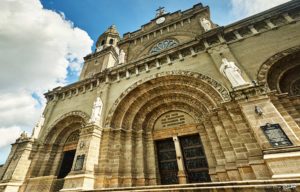
Originally built in 1880, the Manila Cathedral is the current version of the longstanding Church of Manila. It is a masterpiece of architecture that was

It is always a surprise for buildings, parks and houses to survive such wars as it is almost inevitable that everything will be brought down

Explore the vibrant tapestry of Manila through its four national museums, each a unique gem in the city’s cultural crown. These four distinguished establishments are

The Padre Pio Chapel, also known as the St. Pio of Pietrelcina Chapel, holds a special place in my heart as a photographer. It revealed
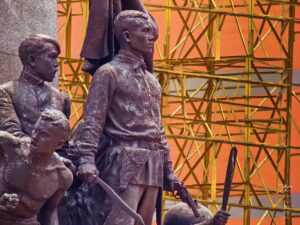
The Bonifacio Monument, also called Bonifacio Monumento or Monumento, proudly stands in Caloocan City, Metro Manila. It is a powerful symbol created by the National

In addition to being considered the oldest Chinatown in the world, Binondo Chinatown is also the center of trade and commerce in Manila City. In
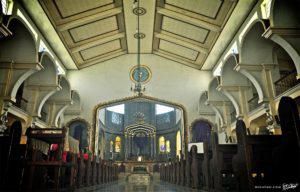
The Polo Church, formally known as the San Diego de Alcala Church, resides in the Polo neighborhood of Valenzuela, Manila. This church has a captivating
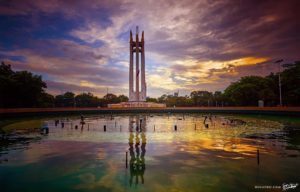
One of Quezon City’s main parks is the Quezon Memorial Circle, which is located in Quezon City and is surrounded by an elliptical road, making

As one of the oldest cemeteries in Manila, Campo Santo De La Loma, commonly referred to as the La Loma Cemetery, is one of the

Located along Roxas Boulevard, Manila and adjacent to the century-old walled city of Intramuros, the Luneta National Park, or “Luneta” as many refer to it,

The Cultural Center of the Philippines or CCP was founded in 1966 under the directive of former President Ferdinand Marcos, in order to reinforce and

It is the home of the popular Asian elephant, Mali, as well as 90 other species. As well as being a landmark in Manila, the

As the nation’s first ever world-class marine theme park, Manila Ocean Park is located in Ermita Manila, within the Philippines’ largest urban resort/aqua-themed hotel complex

The newly restored Jones Bridge is easily recognizable by its beautifully designed black lamp posts—the same ones that were there when the bridge was first

I experienced the vibrant and colorful life of downtown in full. I took some time to appreciate the beauty of Santa Cruz Church and Plaza

It is also known as the Walled City, and during the Spanish Colonial Period it was synonymous with the city of Manila. Intramuros was also

Known as one of the most important baroque churches in the Philippines and as one of the only four baroque churches in the Philippines that

The San Agustin Museum is located adjacent to the UNESCO World Heritage Site, San Agustin Church. It is located in Intramuros—the walled city of Manila—and
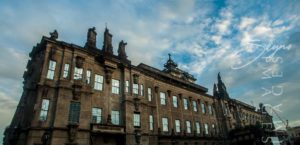
UST, also known as the University of Santo Tomas, is a private Roman Catholic university located in Sampaloc, Manila. It was founded on 28 April

The Binondo Church is a historic church in Manila, located in the District of Binondo, near the Plaza San Lorenzo Ruiz. It was previously called

Manila American Cemetery and Memorial is located in the heart of Taguig City on the lands of Fort Bonifacio and serves as the largest grave

It is considered to be one of the world’s great harbors, the Manila Bay, and it serves as the Port of Manila, Philippines. Having once

Plaza Miranda is a public square bounded by Quezon Boulevard, Hidalgo Street and Evangelista Street in Quiapo, Manila. It is the plaza which fronts the

The city of Makati is a highly urbanized place in the country, making it the nation’s financial center. As a result, it has the highest

San Sebastian Church is a Roman Catholic Minor Basilica located in Quiapo, Manila. It’s also known as Minor Basilica of San Sebastian or San Sebastian

Casa Manila is a living museum that features the lifestyle of a wealthy Filipino family living during the last years of the Spanish colonial period,
BROWSE BY CATEGORIES